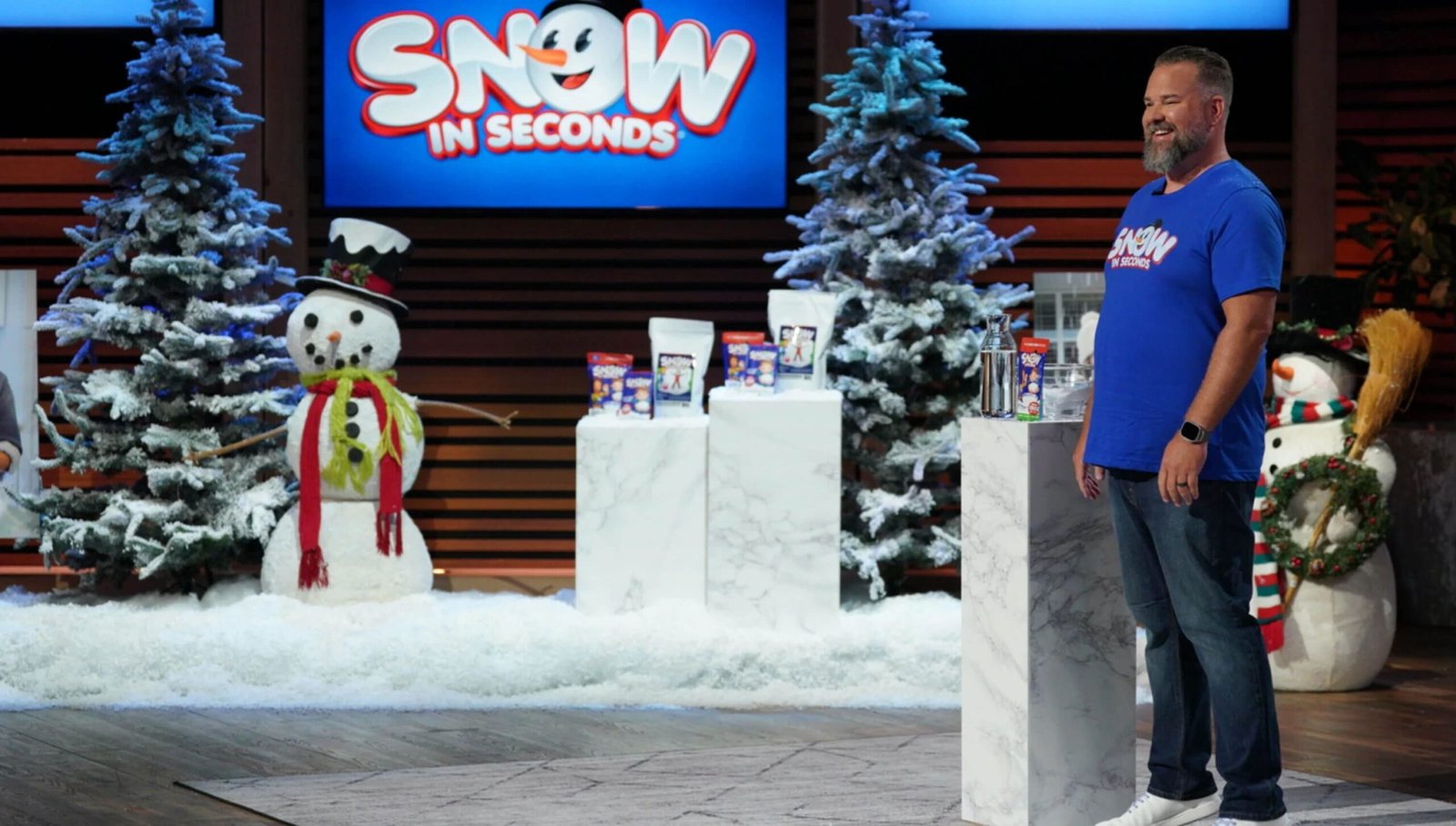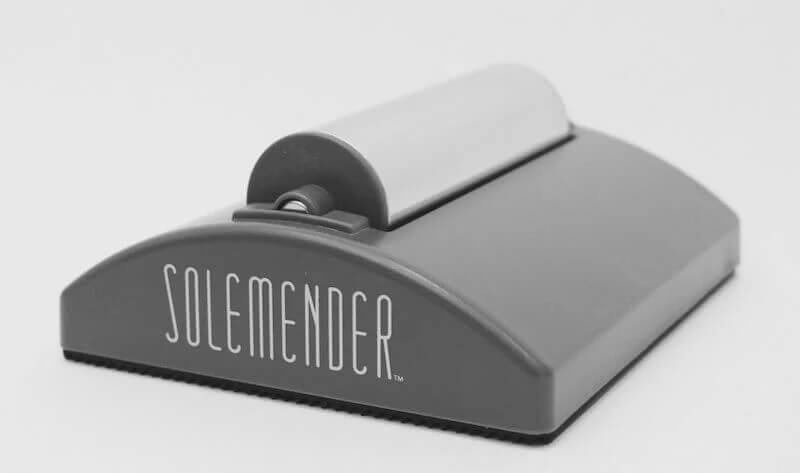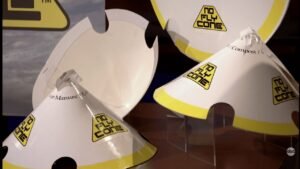Let’s bust a myth right out of the gate—tons of people waltz onto Shark Tank, make a mess, and fade into the background. But Jonathan Dusing’s Snow in Seconds pitch? You remember it. He showed up on Shark Tank Season 15, rolled in with his now-famous bag of white powder, and then—boom—the snow drops on the Sharks’ heads like some Minnesota winter prank.
Producers love a good visual gag, but Dusing’s fake snow spectacle wasn’t just a gimmick. It got genuine laughs, plenty of skepticism, and one of the more dramatic huddles you’ll see in the Tank. Half the game is getting their attention, and Jon did it in seconds—literally.
Who’s the Brain Behind Snow in Seconds?
Meet Jonathan Dusing—the midwestern grinder from Minnesota. This guy didn’t come from celebrity or Silicon Valley seed money. He’s the kind of founder who starts in the garage, ropes in his kids to pack boxes when orders get crazy, and keeps the lights on through every up and down.
Fifteen years in fake snow. That’s not a typo. He built his operation way before Shark Tank, dealing with slow winters, strong competition, and the usual wait, who buys fake snow? questions. That’s Minnesota grit meeting pure side hustle energy.
In a world of overnight app unicorns, this is old-school. You want to know who owns Snow in Seconds? Jonathan Dusing, sweat equity and all.
How Does Snow in Seconds Work? (And Is It Actually Safe?)
Let’s break down what turns heads: Snow in Seconds looks like plain white powder. Add water, and it explodes—figuratively, not literally—into fluffy, light, cold snow in under five seconds.
The science is basic but smart. Sodium polyacrylate is a polymer that sucks up water at crazy rates. That’s the same stuff in diapers or agricultural moisture packs. Snow in Seconds is non-toxic, won’t stain your couch, and is safe for kids, pets, or day-drunk party guests. Unlike old-school snow foam or cotton, it’s cold right out of the pack—and it never melts.
I’ve seen plenty of powder-based fads that cut corners, but this one holds its ground. You can stomp on it, shape it for film sets, or dump it on your Christmas tree. That’s why movie crews and party planners keep coming back.
The Shark Tank Deal: High Stakes, Real Negotiation
Here’s the scene: Jonathan’s in front of the Sharks asking for $50,000 in exchange for 10% equity. For most founders, this is either I-did-the-math-wrong territory, or a starting point before the real negotiations come out.
Kevin O’Leary—never shy—calls out the risk. Anyone can buy this stuff! He’s not totally wrong. There’s nothing magical about the polymer. But Jon pushes brand, track record, and stubborn, midwestern stickiness.
Barbara Corcoran sniffs opportunity, especially in the story and grit. She counters: $50,000 for 33.3%. That’s a big equity bite—real cash for a third of your business. I’ve seen founders walk at this point, thinking their baby is worth seven figures. Jonathan? He took the deal. Smart. Sometimes you don’t win by clinging to a dream valuation. You win by staying in the game.
Sometimes, Shark Tank deals fizz out after filming. This one? It went through—you can check on SharkWorth, which keeps score better than most TV updates.
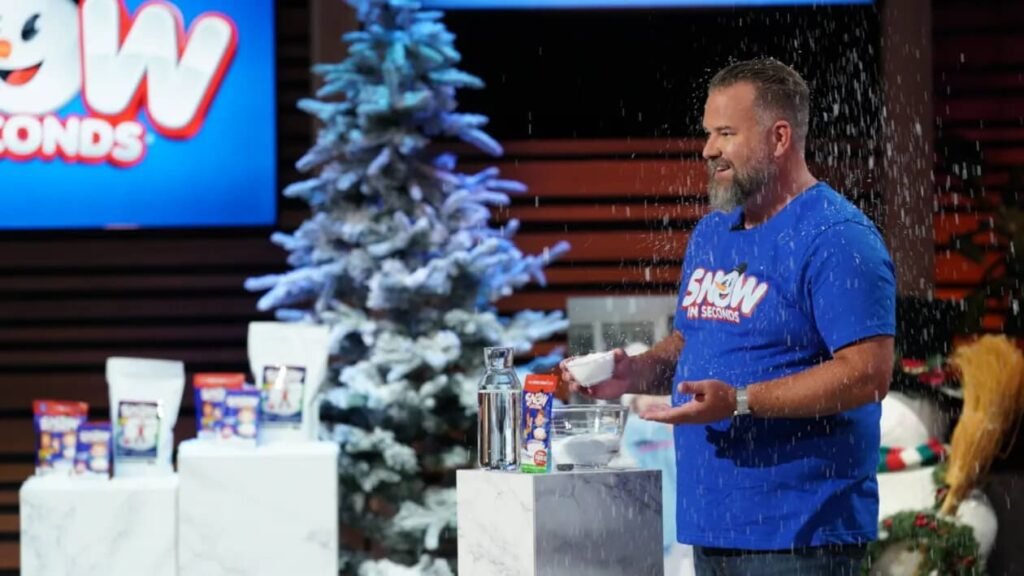
Snow in Seconds Net Worth and Valuation—The Real Math
Let’s get honest about numbers. Post-deal, Jon is looking at a $150,000 valuation (that’s $50K for 33.3%, simple division—no MBA required). That ain’t tech unicorn status, but it’s a real number, based on a decade-plus in business and $2 million in all-time revenue.
Here’s the kicker: $240,000 in sales in 2022 with $40,000 profit. Not an overnight DTC darling, but try finding another seasonal novelty that moves $2 million in powder with this type of margin. And with the Shark Tank follow-up surge and Barbara’s I’ll get it on TV magic, the open-market value is probably higher now. Don’t get dragged into hype or fantasy numbers—valuation is what real money hits the table for, not what you wish you could get.
Sales and Revenue: Where the Real Money Comes From
This is what separates winners from the I had a good holiday surge once crowd.
Jonathan’s revenue split shows hustle and smart targeting:
- 50% of sales go out in bulk: movie productions, commercials, resorts, events.
- 32% through wholesale, including a bunch of white-label customers.
- Amazon sales: 12%. Reliable, but not the main play.
- Website direct: 6%. Small, but passionate.
Lesson: he doesn’t rely on one channel. Chasing only Amazon as a single-founder business? Dangerous. Ignore wholesale, and you’ll struggle to scale. And those bulk movie orders? Those keep the lights on. Over $2 million in total sales—all before the world even saw him in front of the Sharks.
Where Does Snow in Seconds Actually Fit—Who Buys This Stuff?
I hear this all the time: It’s cool, but is there a real market? That’s the right skeptic’s question.
Turns out, lots of folks want or need fake snow:
- Hollywood and big-budget commercials—where the snow needs to look real but not melt under hot lights.
- Schools and therapy centers, using it for sensory play. Non-toxic = fewer headaches for teachers and parents.
- Wedding and event planners. Because nothing says Instagram moment like a room full of faux snow.
- Regular families. If you live in the South and your kid wants a Frozen-themed party, you know exactly who you are.
Snow in Seconds isn’t fighting for grocery shelf space every winter. It’s built for triggers—when you need WOW for the camera, the party, or the classroom.
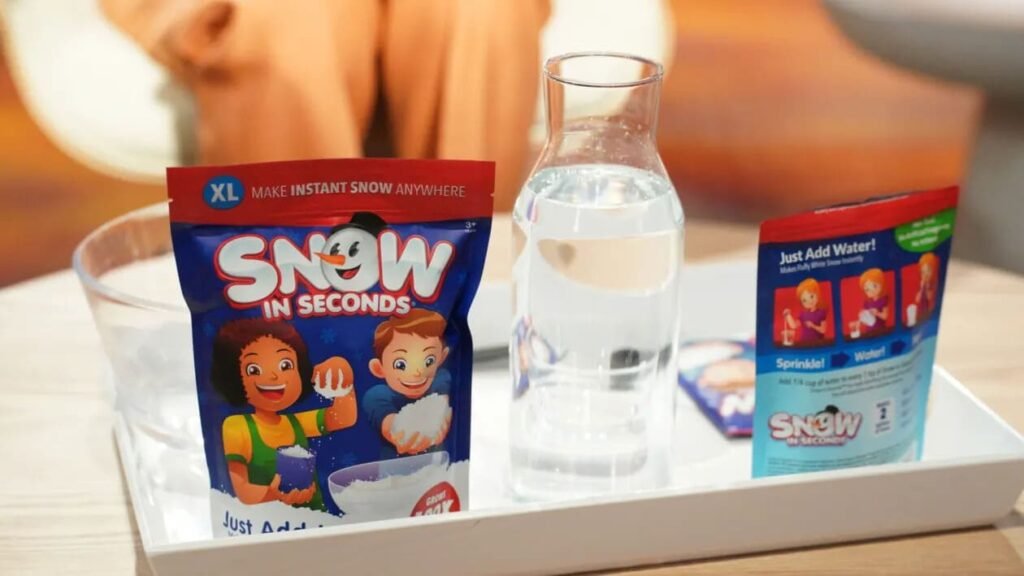
The Aftermath: Did Shark Tank Actually Help?
Here’s where most post-Tank stories fizzle out. You get some orders after airing, maybe a few big PR hits, and then… quiet.
Not here. Snow in Seconds is still shipping—direct, on Amazon, and in industrial amounts for the big players. With Barbara Corcoran in his corner, Jonathan has scaled up marketing, spun up new packaging variations, and plastered that As Seen on Shark Tank badge everywhere.
The film and event side is still the bread and butter, but now the DTC and Amazon orders have picked up too. Manufacturing and fulfillment? Still US-based—keeping things tight and responsive. There aren’t any big scandals or flopped pivots. It’s just a business that figured out its lanes, shored up operations, and used the Shark Tank spotlight for steady, measured growth.
Is Fake Snow a Real Business? My No-Fluff Take
Let’s get clear: Snow in Seconds isn’t the next Squatty Potty or Scrub Daddy. No wild viral moment. No massive retail expansion. But here’s what matters—it’s survived 15 years, weathered crazy seasonality, and landed an actual Shark to help tell its story.
Jonathan Dusing played the entrepreneur’s grind for what it is. He took a tough deal. He avoided founder ego traps. He stayed focused on repeat buyers, wholesale strength, and smart, realistic margins.
Does every Shark Tank appearance lead to millions? Absolutely not. In fact, most don’t. Snow in Seconds built a sustainable, profitable lane and has kept growing, even when the hype faded. And with Barbara—and the SharkWorth scoreboard—backing him, the momentum is still there.
Would I run or invest in something like this? If you love fun products, are ready for crazy seasonality, and you have thick skin on margin wars, hell yes. If you think every deal is a rocket ship to a tech exit, you’ll be bored. But if you want a real shot at building a business with staying power—while making movie magic for millions—this founder showed that sometimes the slow burn is way more interesting than the quick flash.
FAQs: The Real Questions People Ask
Is Snow in Seconds from Shark Tank still in business?
Absolutely. They’re active, shipping online, and still filling bulk orders for film and events.
Did Barbara Corcoran’s deal really go through?
Yes. It was finalized. For the newest numbers, always check SharkWorth for inside scoops.
What makes Snow in Seconds different from other fake snow?
Instant expansion, cold feel, and a non-toxic formula. The company’s track record and reputation give it staying power.
Can anyone buy it, or is it only for the movie industry?
Anyone. Home kits, party planners, teachers, and yes, the big-budget movie folks.
What’s the price range?
It swings based on quantity—small packs for at-home play, big orders for studios and events.
Where is Snow in Seconds made?
Manufactured and shipped in the USA.
What’s in it? Any safety risks?
Main ingredient is sodium polyacrylate. Non-toxic, safe when used correctly. No crazy chemical warnings.
Did Shark Tank give them a big sales boost?
Yep. The As Seen on Shark Tank tag drove a visibility spike and new orders.
This is one of those rare cases where gritty hustle meets real results—not flashy, but rock steady. Snow in Seconds proves you don’t need unicorn buzz to win. Sometimes all you need is a great product, a smart founder, and a snowstorm right on national television.

